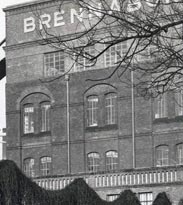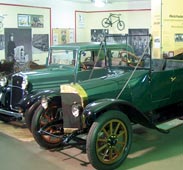Babies all over Berlin were pushed in these prams
In 1871, the year of the foundation of the German nation state, brothers Adolf, Hermann and Carl Reichstein transformed their father's basket-making workshop into a prominent Brandenburg business. This was the Gründerzeit era (i.e. "founding years", the period of rapid economic expansion in Germany up to 1873) and a good time for procreation. So the Reichsteins produced prams. Not only in Berlin, but all over Europe, parents proudly strolled with their babies in these prams made in Brandenburg. And where there is a pram, a bicycle is not far away. In 1883, the Reichsteins copied an English model of a bicycle. They then developed a bicycle of their own and called it the "Brennabor", the old name for Brandenburg. The name was so well-received that the brothers decided to adopt it for their entire enterprise. The good quality of their products stimulated demand. Motorcycles were added to the range and cars too, from 1907. They rolled off the assembly lines and onto the streets in large numbers. The world economic crisis of 1929 resulted in the closure in 1931 of the business that had started off so promisingly in 1871. Part of the factory building, which stands in the Bahnhofsvorstadt neighbourhood, still bears witness to the former great industrial concern (1).
Curious visitors can find out more about Brennabor and admire its products at the special exhibition about the company's history at the Industriemuseum (Museum of Industry). A classic car rally which includes Brennabor vehicles is also held in Brandenburg every August. The Reichstein Villa (2) is located on St.-Annen-Promenade. St.-Annen-Promenade intersects with Steinstraße at the Steintorturm tower. In 1887, the local historical society opened its first exhibition on the history of the city in the former fortified tower (3) which originates from first half of the 15th century. An exhibition on the navigation of the Brandenburg river Havel, which connects Brandenburg and Berlin, can be seen there today.

